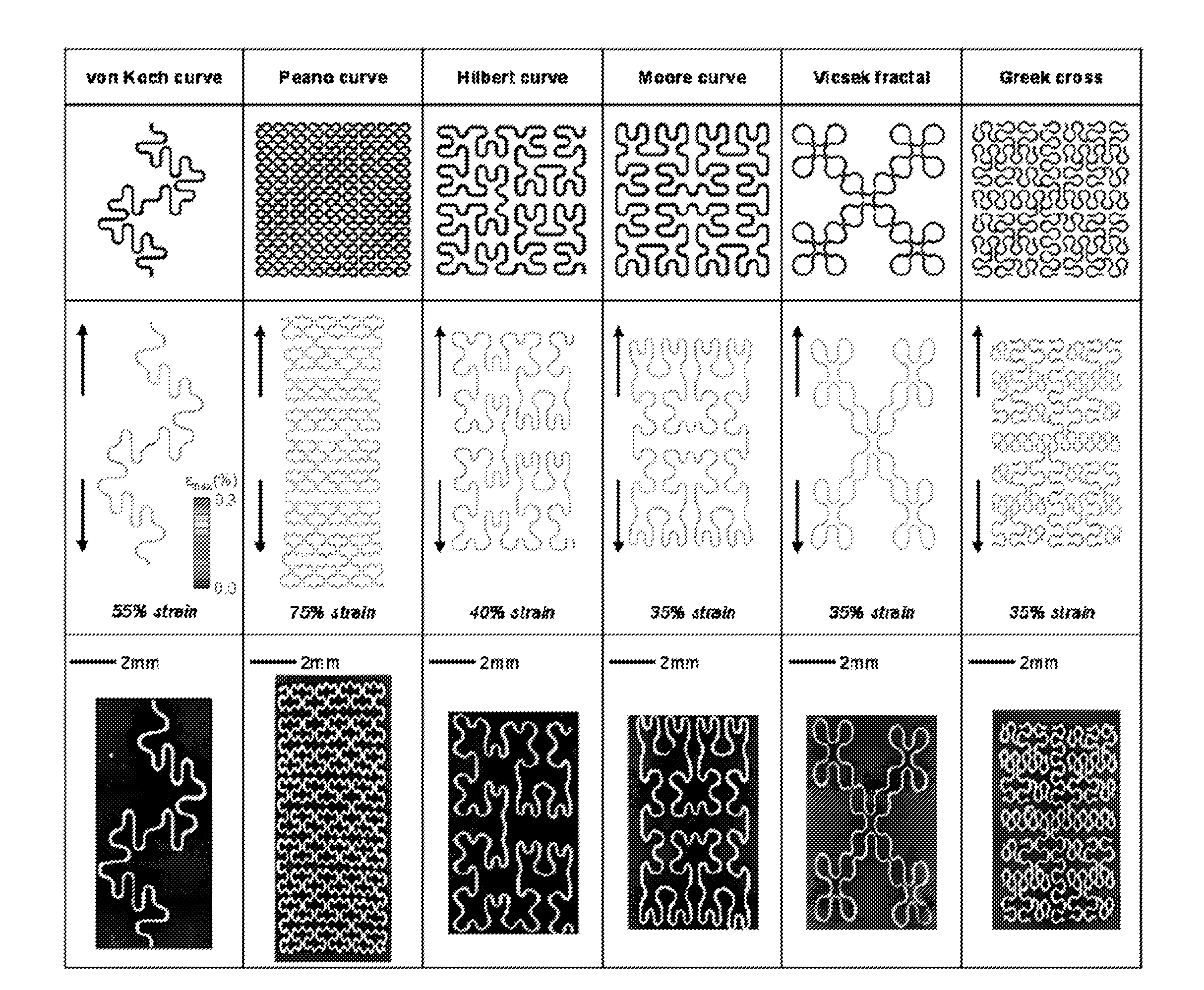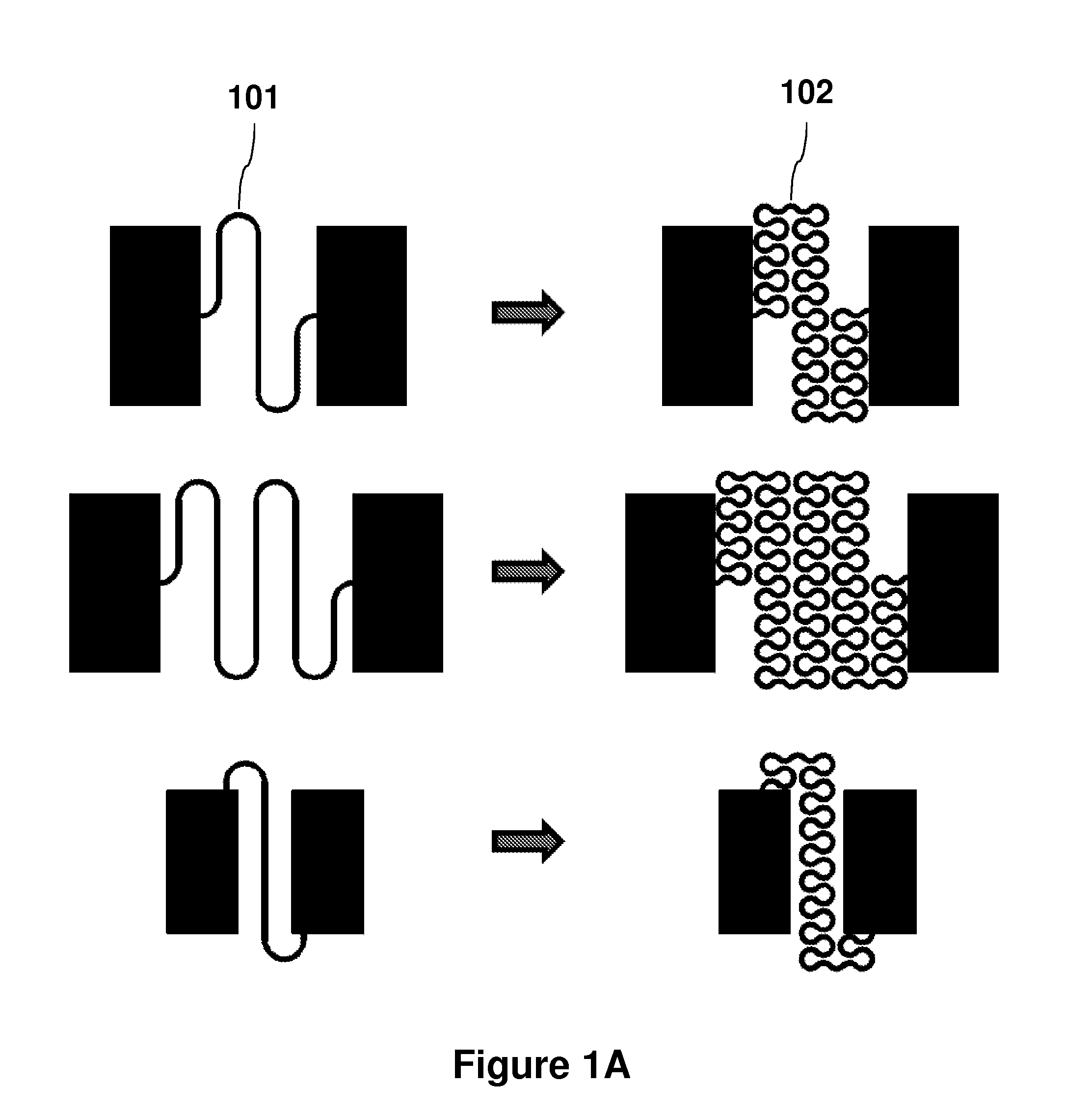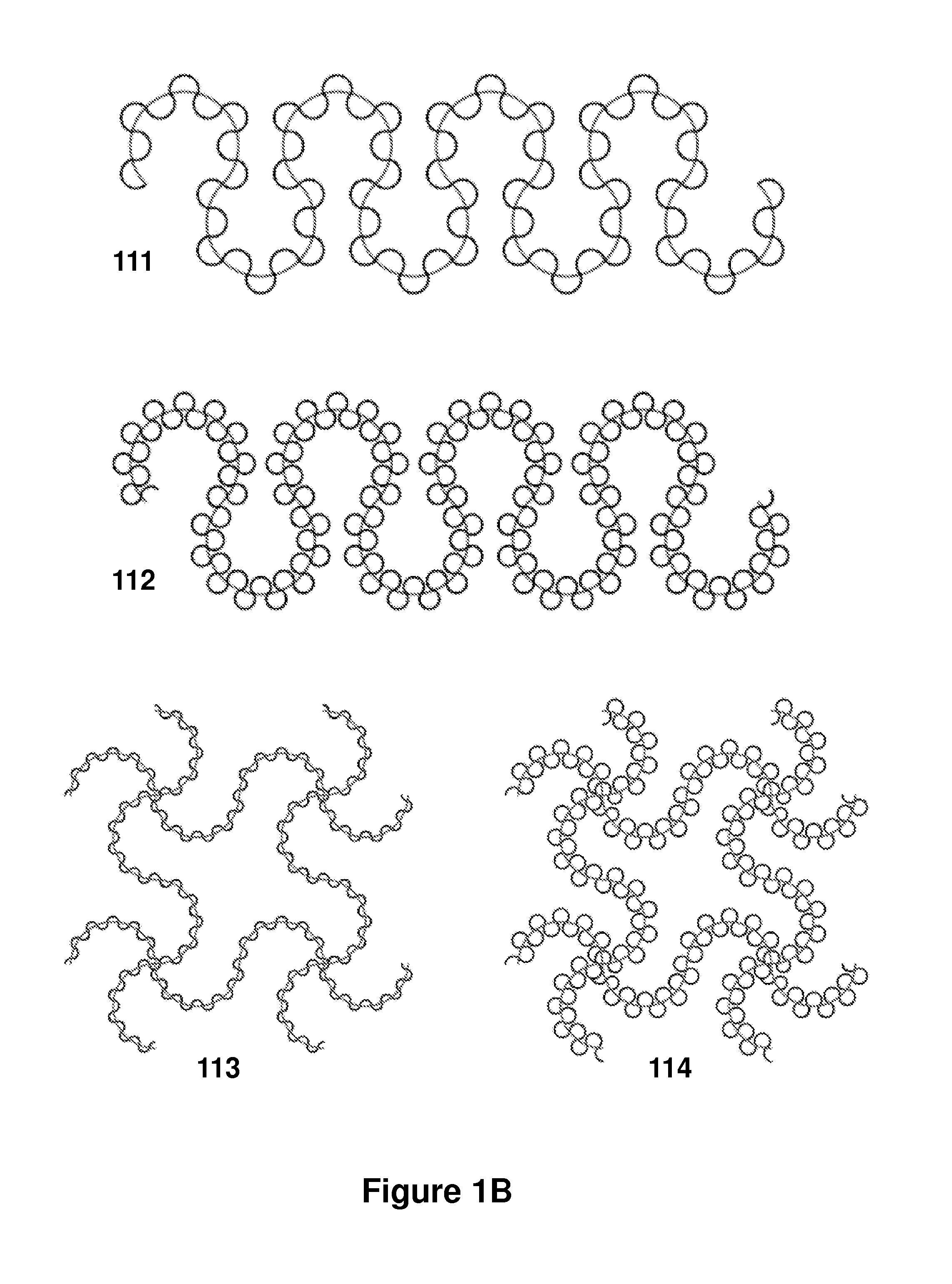Self-similar and fractal design for stretchable electronics
a technology of stretchable electronics and fractals, applied in the direction of circuit bendability/stretchability, semiconductor/solid-state device details, semiconductor devices, etc., can solve the problems of prohibitively time-consuming conventional fea approach, computational approach is impractical for rapid device design and optimization, approach substantially saves computational effort, etc., to achieve the effect of improving mechanical properties
- Summary
- Abstract
- Description
- Claims
- Application Information
AI Technical Summary
Benefits of technology
Problems solved by technology
Method used
Image
Examples
example 1
Fractal Design Concepts for Stretchable Electronics
[0152]Stretchable electronics provide a foundation for applications that exceed the scope of conventional wafer and circuit board technologies due to their unique capacity to integrate with soft materials and curvilinear surfaces. The ultimate scope of possibilities is predicated on the development of device architectures that simultaneously offer advanced electronic function and compliant mechanics. This example shows that thin films of hard electronic materials patterned in deterministic fractal motifs and bonded to elastomers enable unusual mechanics with important implications in stretchable device design. In particular, this example demonstrates the utility of Peano, Greek cross, Vicsek, and other fractal constructs to yield space-filling structures of metals, polymers, and semiconductors, including monocrystalline silicon, for electrophysiological sensors, precision monitors and actuators, and radio frequency antennas. These d...
example 2
Stretchable Batteries with Self-Similar Serpentine Interconnects and Integrated Wireless Recharging Systems
[0180]An important trend in electronics involves the development of materials, mechanical designs and manufacturing strategies that enable the use of unconventional substrates, such as polymer films, metal foils, paper sheets or rubber slabs. The last possibility is particularly challenging because the systems must accommodate not only bending but also stretching, sometimes to high levels of strain (>100%). Although several approaches are available for the electronics, a persistent difficulty is in energy storage devices and power supplies that have similar mechanical properties, to allow their co-integration with the electronics. This Example provides a set of materials and design concepts for a rechargeable lithium ion battery technology that exploits thin, low modulus, silicone elastomers as substrates, with a segmented design of the active materials, and unusual ‘self-simil...
example 3
Mechanics of Ultra-Stretchable Self-Similar Serpentine Interconnects
Abstract
[0289]Electrical interconnects that adopt self-similar, serpentine layouts offer exceptional levels of stretchability in systems that consist of collections of small, non-stretchable active devices, in the so-called island-bridge design. This Example develops analytical models of flexibility and elastic stretchability for such structures and establishes recursive formulae at different orders of self-similarity. The analytic solutions agree well with finite element analysis (FEA), with both demonstrating that the elastic stretchability more than doubles when the order of the self-similar structure increases by one. Design optimization yields 90% and 50% elastic stretchability for systems with surface filling ratios of 50% and 70% of active devices, respectively.
1. INTRODUCTION
[0290]Interest in development of electronic and optoelectronic systems that offer elastic response to large strain (>>1%) deformation h...
PUM
 Login to View More
Login to View More Abstract
Description
Claims
Application Information
 Login to View More
Login to View More - R&D
- Intellectual Property
- Life Sciences
- Materials
- Tech Scout
- Unparalleled Data Quality
- Higher Quality Content
- 60% Fewer Hallucinations
Browse by: Latest US Patents, China's latest patents, Technical Efficacy Thesaurus, Application Domain, Technology Topic, Popular Technical Reports.
© 2025 PatSnap. All rights reserved.Legal|Privacy policy|Modern Slavery Act Transparency Statement|Sitemap|About US| Contact US: help@patsnap.com



